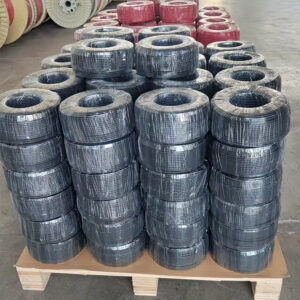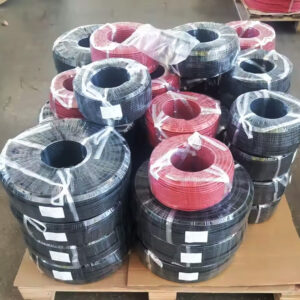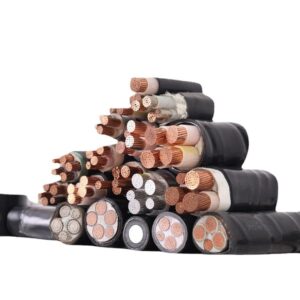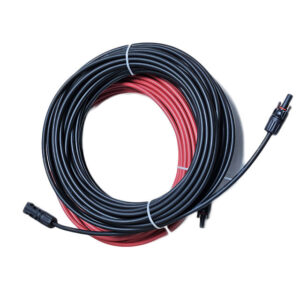Solar cable quality directly impacts your photovoltaic system’s safety, efficiency, and lifespan – but not all products meet the rigorous demands of solar applications. While they may appear similar, critical differences in materials, certifications, and design determine whether a cable delivers 25+ years of reliable service or becomes a liability.
In this guide, we’ll break down how solar panel cables vary and what specifications truly matter for your PV installation.
1. Conductor Material: Copper vs. Tinned Copper
✔ Standard Solar Cable
- Bare Copper: Found in budget options
- Risk: Prone to oxidation in humid environments, increasing resistance over time
✔ Premium Solar Cable (e.g., H1Z2Z2-K)
- Tinned Copper: Tin coating prevents corrosion
- Benefit: Maintains conductivity in coastal/high-humidity areas
Oxidation can reduce conductivity by 25% in 5 years
2. Insulation: The Lifespan Decider
Type Material Lifespan Temp Range Entry-Level PVC 5-8 years -20°C to 70°C Standard XLPE 12-15 years -40°C to 90°C Premium LSZH XLPE 25+ years -40°C to 120°C Key Insight: LSZH (Low-Smoke Zero-Halogen) insulation prevents toxic fumes during fires – critical for rooftop installations.
3. Certification Tiers: What Labels Really Mean
Minimum Compliance
- CE/RoHS: Basic safety & environmental standards
Industry Standard
- TUV (IEC 62930): UV/weathering, flame, and flexibility tests
Premium Validation
- UL 4703: North American fire safety
- DNV GL: Marine/offshore solar certification
- IEC 62930 Ed.2: Enhanced DC stress testing
Warning: 68% of “solar cables” on Amazon fail TUV testing (Electrical Safety Foundation International)
4. Voltage Class: The 600V vs. 1500V Divide
600V Cables
- For residential/small commercial systems
- Max system voltage: ≤600V DC
1500V Cables
- Utility-scale solar farms
- Benefits:
- 30% fewer combiner boxes
- Lower installation costs
- Requires: Thicker insulation (3.0mm vs. 1.5mm)
Industry Shift: 80% of new utility projects use 1500V systems (Solar Energy Industries Association)
5. Hidden Cost Drivers
Feature Cheap Cable Quality Cable UV Stabilizers 0.5% load 3-5% load Jacket Thickness 0.8mm 1.5mm+ Testing Self-cert 3rd party lab Warranty 5 years 25 years Total Cost Analysis: Quality cables save $0.12/watt over 20 years by avoiding replacements.
How to Spot Substandard Cables
❌ Faded printing (poor UV resistance)
❌ Stiff feel (inferior polymers)
❌ Missing batch codes (no traceability)
❌ “CE” mark without notified body numberVerification Tip: Demand test reports with your cable batch number.
The Verdict: 3 Cable Tiers Defined
- Budget ($0.15/m): PVC insulation, bare copper – Risky for outdoor use
- Standard ($0.25/m): XLPE, tinned copper – TUV-certified for residential
- Premium ($0.40/m): LSZH XLPE, 1500V rating – For commercial/utility ROI
Conclusion: Choose Based on Application
While all solar cables serve the same purpose, their performance varies dramatically. Match your selection to:
✅ Environment (coastal? desert?)
✅ System Voltage (600V/1500V)
✅ Certification Needs (TIV mandatory in EU)
Need Certified Solar Cables? Request Our TUV/UL Test Reports







